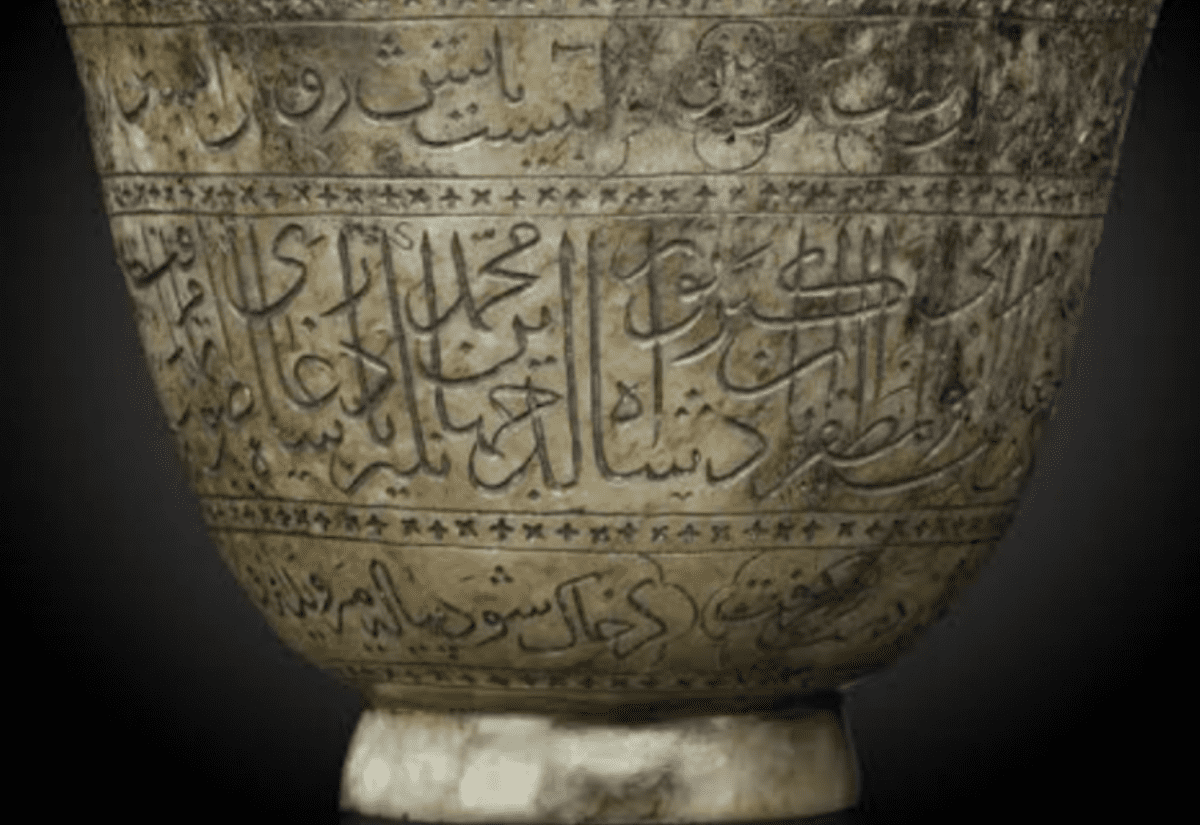
Article by EIH Researcher and Writer
Anupam Tripathi
What? You don’t drink wine? Infidel, begone!
Don’t think it’s made of those grapes from some farm.
My love is the wine, my heart is its cup.
The wine-boy is Creator of the Dawn.
~ Jalal al-Din Rumi
The consumption of wine was an important part of the culture of the Timurid court. Almost all Mughal rulers devoted themselves to it. Mughal court paintings represent scenes of wine consumption. Initially, wines and wine glasses were associated with hedonistic pleasures, however, they were imbued with a plurality of meanings which go far beyond hedonism. Rumi talks about the virtues of wine and uses the metaphor of wine cup, tavern, cupbearer and drunkenness for the realization of the divine. Winecups could shape the political ideology of the empire both as an agent and object. Wine was an integral part of the celebrations at court. In one of the paintings, Babur (1483-1530 CE) is shown drunk with a bottle and a cup of wine in his hand. The cup of wine represents the pleasure of life.A painting from the last years of Akbar’s reign (1556-1605)depicts a young prince in an idyllic setting holding a cup of wine, a book, a flower in his hand. It does not show amorous mood, but a poetic mysticism. This argument is supported by the Sufi verse on the surface. In another painting, a young man looks into the cup of wine to see the reflection of the divine. The cup of wine is the object of the realization of the truth. He seeks his beloved through the cup of wine. MeeraKhare maintains that the man himself is the divine beloved of his lovers; spectators. Ghazals use wine, wine cups, drunkenness to realize the divine. The painted object of the wine cup was a visual space in which the mysteries of the divine could be understood. The representation of the imagination of wine combines the search for the absolute with the notion of Mughal royalty.Jahangir (1569-1627 CE), despite being a known drug addict, has never been painted intoxicated. Under Jahangir and Shah Jahan (1592-1666 CE) wine glasses became a motif to represent the eclectic ruler. The wine cup in Jahangir’s hand has become a symbol of universal ruler ship. Persian literature identifies the cup of wine with the cup of Jamshid, a legendary Persian hero. It is the symbol of the elixir of long life; the world in miniature was represented through the cups. Mughal paintings often represent the ritual of presentation. In one of the paintings, a prince is seen presenting a cup to the emperor. This shows their relationship; subordination of the prince and his loyalty to the emperor.
Since the reign of Muhammad Shah, the theme of wine, woman and verse has been potrayedin harem scenes. The vignettes from the harem seem to have been painted with an erotic flavour. Women were objects of desire; associated exclusively with pleasure. These places not only bridged the differences, but at the same time showed that the differences existed, as in one of the paintings, Babur is seen forcing a dervish to drink wine. This shows that Babur was trying to assert his authority over the spirit world.
Wine and glasses become agents to assert authority. They weren’t just a means of fun, but they created class, gender, cultural hierarchies. Drinking parties served as a space where socializing interactions took place.
BIBLIOGRAPHY
- MeeraKhare, The Wine Cup in Mughal Court Culture, Sage Publications , New Delhi.
- Meena Bhargava, Narcotics and Drugs, Intoxication or simply Therapeutic., Sage Publications, New Delhi.




















